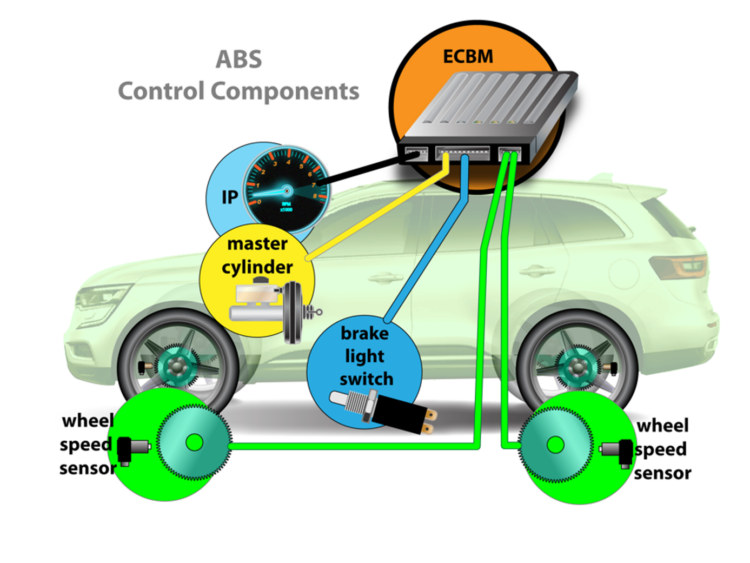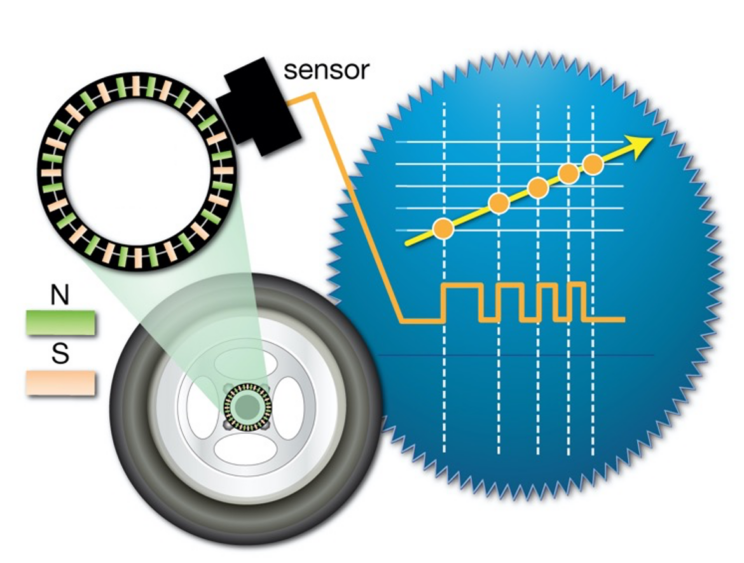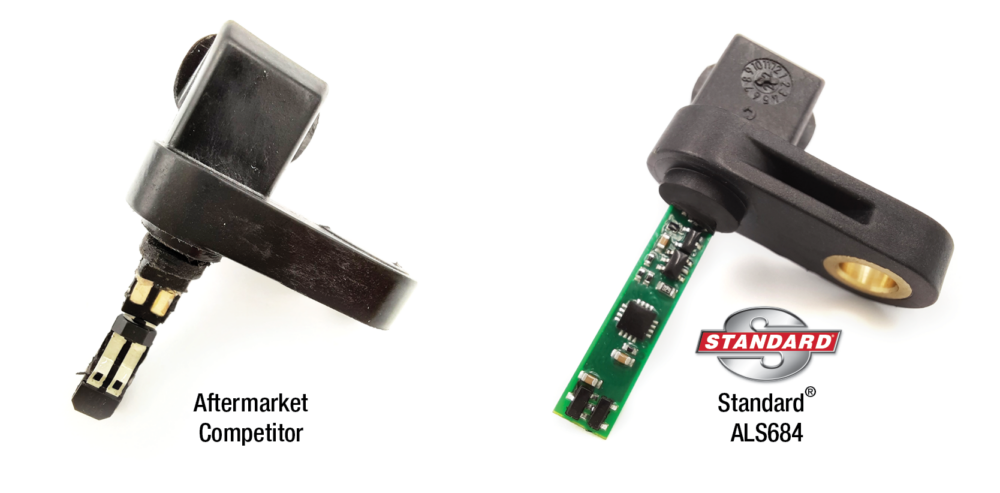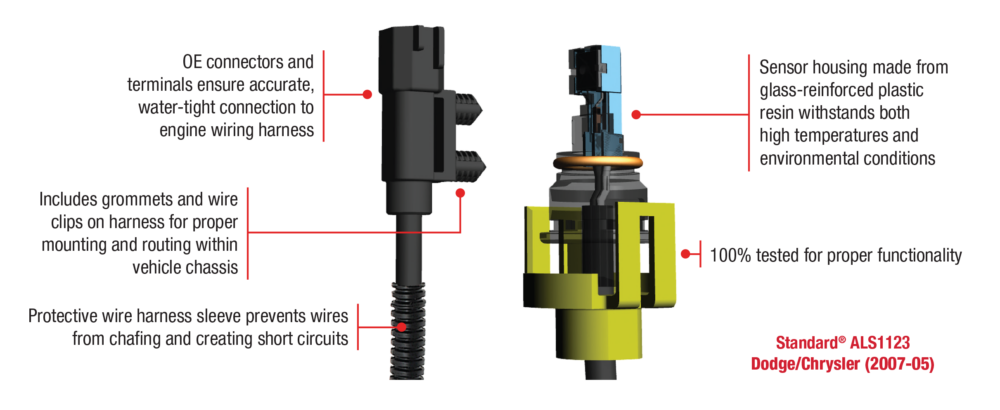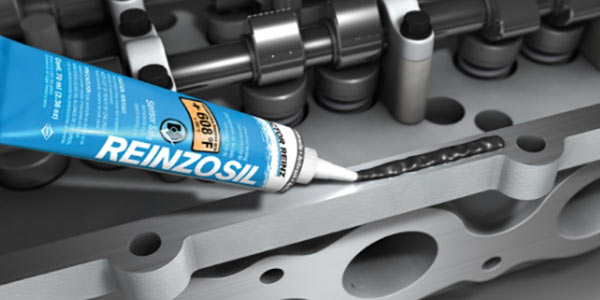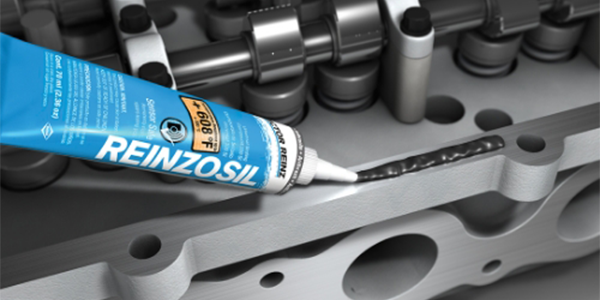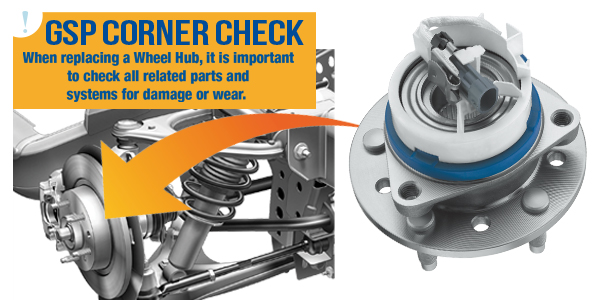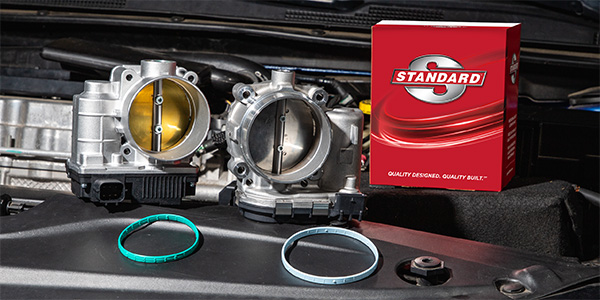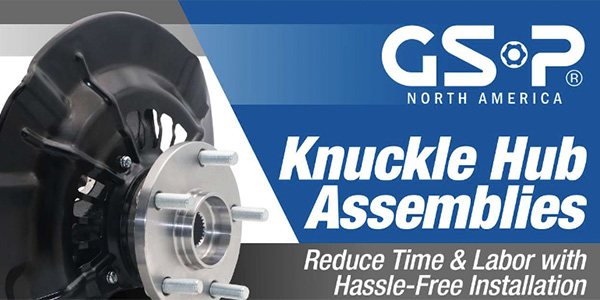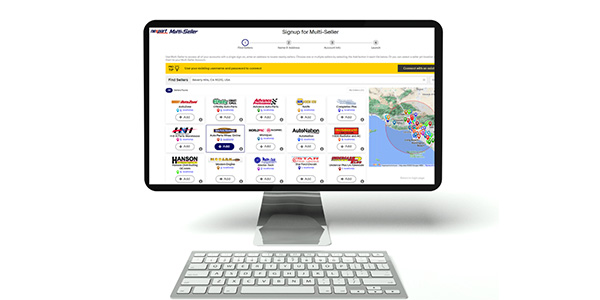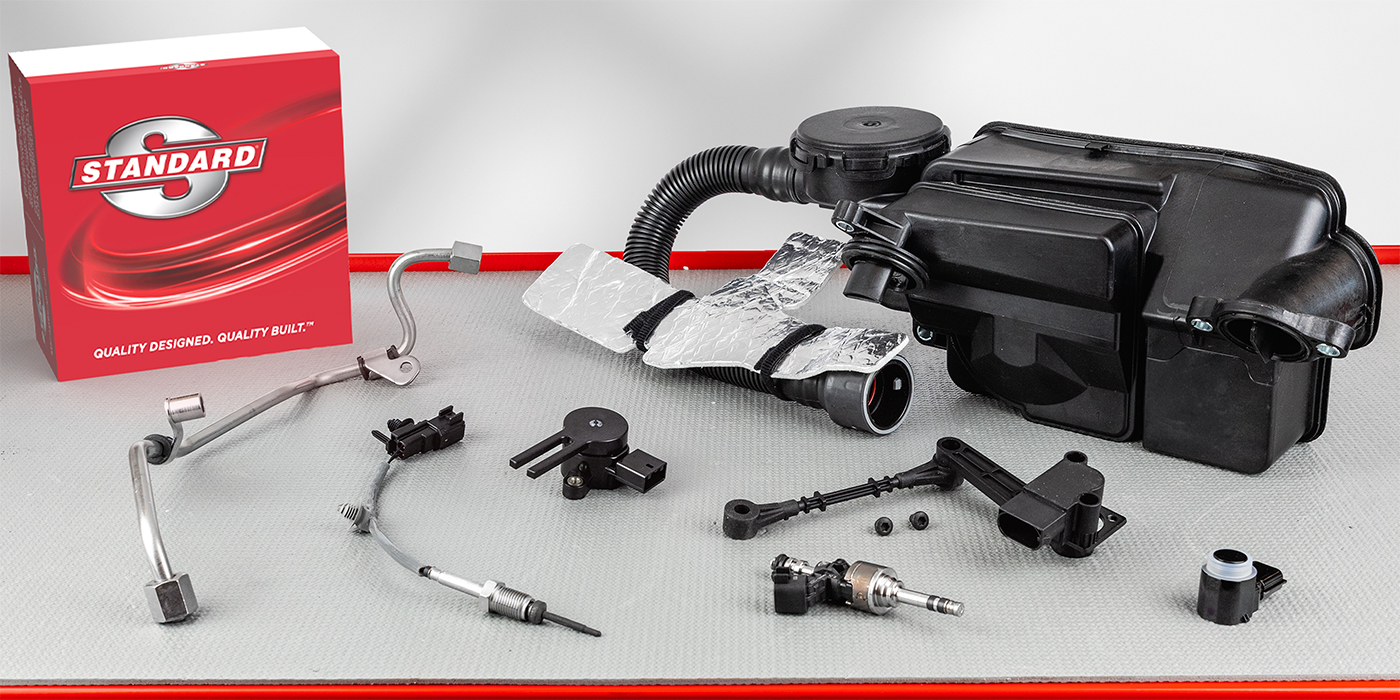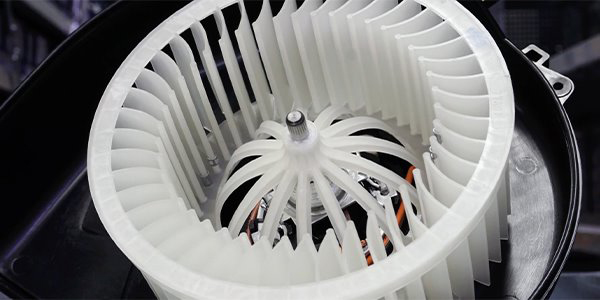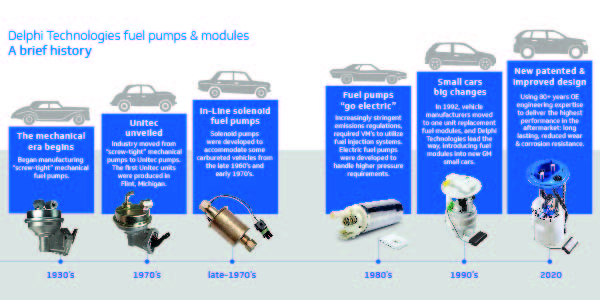ABS Unwrapped
Anti-lock Braking Systems are intended to do exactly as the name portrays – prevent a vehicle’s wheels from locking up during a braking event. If any of the wheels lock up, the driver has less control of the vehicle and is more prone to an accident. By releasing some brake pressure to the locked-up wheel, the stopping distance will be increased, but the driver will be able to maintain control to hopefully avoid a collision. Prior to ABS, drivers were taught to pump the brake pedal when attempting to stop suddenly, or when stopping on gravel, ice or loose pavement. Now, the ABS system does that for them.
ABS is primarily concerned with negative wheel slip, but it also monitors, and many times compensates, for any variation in wheel speeds. The major components to every ABS system are wheel speed sensors, brake switches, brake master cylinders, EBCM, and hydraulic assemblies containing the pump motor, accumulator, valves, and solenoids.
Passive vs. Active
The heart of ABS is the wheel speed sensor. To date, there are two categories of wheel speed sensors: passive and active. The first generation of wheel speed sensors were passive. These are variable reluctance (VR) sensors, and are essentially a magnet within a coil of wire. Signals are generated by rotating a metal reluctor past the sensor. As the cogs approach the sensor, the magnetic field expands, and when the cog moves away from the sensor, the magnetic field collapses. The expanding and contracting magnetic field induces an AC voltage, which is then recognized by the EBCM as a speed signal, based on the frequency of the changes.
Signal strength is dependent upon speed, so these sensors are not considered effective at low speeds. This is why they are not used in stability control systems. Expected resistance of the sensor should typically be somewhere between 1,000 and 2,500 Ohms, which can be tested with an Ohm meter. The resistance spec will often be found imbedded in a testing procedure instead of within specs. In addition, air gap between the sensor and the tone ring is critical.
Many vehicles now use active speed sensors. These sensors were first used shortly after 2000, but some manufacturers didn’t use them until 2010. Different types of active speed sensors include Hall Effect or Magneto Resistive sensors.
Hall Effect sensors are commonly used in automotive applications for measuring the speed of a rotating object, such as a crankshaft or camshaft. They have recently gained popularity as wheel speed sensors due to their accuracy across the entire speed range, along with their resistance to dirt, mud, water, and rust. Unlike magnetic generator-type sensors, which produce an AC sine wave, Hall sensors produce an accurate square wave signal.
The Hall Effect sensor is constructed of a stationary permanent magnet and semiconductor Hall Effect chip that are mounted next to each other, separated by an air gap. A metal rotor consisting of windows and blades is mounted to a shaft, such as the wheel bearing or axle shaft, and arranged so that during rotation, the windows and tabs pass the permanent magnet and semiconductor Hall chip. This effectively shields and exposes the Hall chip to the permanent magnet’s field respective to whether a tab or window is passing though the Hall sensor. When the shutter blade is blocking the chip from the magnetic force, a voltage is produced from the Hall Effect sensor. When the chip is exposed to the magnet through a window, the voltage collapses.
A Magneto Resistive (MRE) sensor is very similar to a VR sensor with Hall Effect-like properties. An MRE sensor requires a power source and produces a frequency-modulated signal. This is a more accurate way to analyze rotational and linear position by measuring the direction of the field lines, not the magnetic strength. These sensors are becoming increasingly popular in automotive applications due to their accuracy and adaptability. Magneto Resistive sensors are being used in ABS, CMP, and CKP sensors.
To test these sensors, the technician should verify that there is power present on one of the wires. The other wire will typically output a square wave, which will be frequency-modulated. A scope is still the best tool for watching the square wave, but a DVOM can also be used to test for a signal. It is important to search service information to find the operating characteristics of the specific sensor being tested.
Choosing the Best Parts for the Job
Active-style ABS sensors have been around for over a decade now, but how do you know that the sensor you pulled out of the box will perform on your customer’s car in all situations? During extensive engineering and vehicle test center research, Standard® recognized that many aftermarket competitors missed important details on their newer ABS sensors. For example, several modern vehicles feature a signature on the sensor output signal that indicates reverse wheel rotation. In Standard’s testing of 48 different sensors, it was discovered that many aftermarket sensors did not include this special indicator, which can negatively affect vehicle safety systems like Hill Hold Assist and Electronic Stability Control. Standard® ABS Sensors, like ALS684, are designed and manufactured using microsensors to produce unique forward and reverse signals, ensuring that the part you install on your customer’s vehicle will keep the safety systems operating as designed.
Standard® also knows that rigorous testing means a more reliable sensor. That’s why Standard® performs extensive testing in the laboratory and in real-life situations. This testing includes measuring, evaluating, and comparing shaft speed versus delta voltage, output voltage and variation to OE, magnetic field strength and air gap, output wave form, pulse width, and more.
Standard® ABS Sensors are available for import and domestic vehicles with electric, hybrid, gas, and diesel powertrains. With more than 2,600 part numbers, Standard® has you covered. Each ABS Sensor is engineered to integrate with the vehicle’s electronic safety systems and perform as the vehicle manufacturer intended, in all situations. Standard also includes the applicable grommets and wire clips, or protective wire harness sleeves, making it easier to install right out of the box.
For more information on Standard® ABS Sensors and for helpful installation tips, search “ABS” on the StandardBrand YouTube channel or visit StandardBrand.com.

This Article is Sponsored By: Standard®



